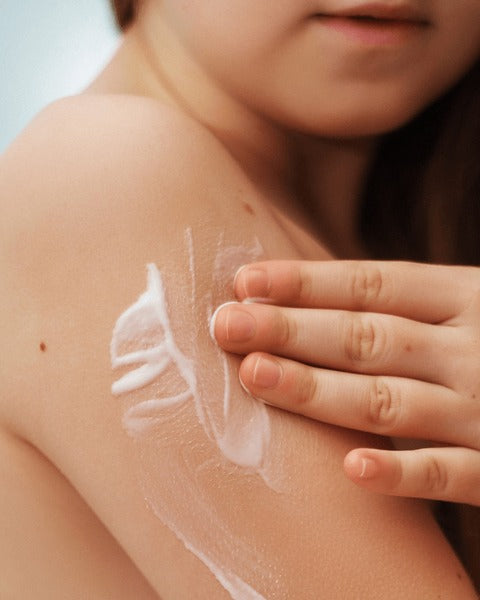
Exploring the Link Between Menopause and Joint Pain

For many women entering menopause, joint pain becomes an unexpected companion on their journey through this natural life transition. While hot flashes and mood changes are widely recognized symptoms of menopause, the connection between menopause and joint pain affects more than half of women during this period, making it a crucial aspect of the menopausal experience that deserves attention.
The Hormonal Foundation of Joint Health
At the heart of menopausal joint pain lies the complex relationship between hormones and joint health. Estrogen, often misunderstood as solely a reproductive hormone, plays a vital protective role in maintaining joint integrity. Sarah Thompson, a physical therapist specializing in women's health, explains,
"Many of my patients are surprised to learn that estrogen helps reduce inflammation and maintain cartilage flexibility. When these levels drop during menopause, joints often become more susceptible to pain and stiffness."
As estrogen levels decline, several significant changes occur in the body. The protective anti-inflammatory effects diminish, leading to increased joint inflammation. Cartilage, which relies on estrogen for maintenance and flexibility, may become less resilient. Additionally, the loss of estrogen's protective effects can accelerate bone density loss and muscle mass changes, further impacting joint stability and comfort.
Understanding Menopausal Joint Pain
Menopausal joint pain, technically termed "menopausal arthralgia," presents differently than other types of joint pain. Dr. Maria Rodriguez, a rheumatologist, notes,
"What sets menopausal joint pain apart is its pattern. Women often report morning stiffness that improves with movement, and pain that affects multiple joints simultaneously."
The most commonly affected areas include the back and neck, where women often experience persistent aching and morning stiffness. Shoulders and elbows may show reduced mobility, while weight-bearing joints like knees and hips frequently demonstrate increased sensitivity. Many women also report stiffness and pain in their hands and fingers, particularly during morning hours.

Evidence-Based Management Strategies
Managing menopausal joint pain effectively requires a comprehensive approach. Regular exercise stands as one of the most powerful tools for maintaining joint health. Low-impact activities like swimming and walking help strengthen joints without causing excessive stress. Yoga and stretching routines can improve flexibility and reduce stiffness, while resistance training helps maintain crucial muscle mass that supports joint stability.
Dietary choices play a significant role in managing joint pain. "I've seen remarkable improvements in patients who adopt an anti-inflammatory diet," shares nutritionist Linda Chen. "Incorporating foods rich in omega-3 fatty acids, like salmon and walnuts, along with colorful fruits and vegetables, can help reduce inflammation naturally." Maintaining a healthy weight through proper nutrition also reduces stress on weight-bearing joints.
Medical interventions may become necessary for some women. Over-the-counter pain relievers can provide temporary relief, while cold and heat therapy helps manage inflammation and discomfort. In more severe cases, healthcare providers might recommend joint injections or consider hormone replacement therapy when appropriate.

The Importance of Early Intervention
Taking proactive steps before and during menopause can significantly impact joint health outcomes. Regular exercise, maintaining good posture, and addressing joint pain early rather than waiting for it to worsen are crucial strategies. Working with healthcare providers helps ensure appropriate treatment and monitoring of symptoms.
Personal experiences vary significantly across different demographics. Research indicates that postmenopausal women show higher rates of joint pain compared to those in perimenopause, while factors like education level and geographic location can influence both symptom reporting and access to treatment options.
Looking to the Future
As our understanding of the relationship between menopause and joint pain continues to evolve, new treatment approaches are emerging. Current research focuses on developing targeted hormone therapies and novel anti-inflammatory treatments, while also exploring the integration of alternative medicine approaches.
The connection between menopause and joint pain represents a significant aspect of women's health that requires attention and understanding. Through a combination of lifestyle modifications, appropriate medical interventions, and proactive health management, women can better navigate this challenging aspect of menopause. Remember that each person's experience is unique, and working with healthcare providers to develop personalized treatment plans remains essential for successfully managing menopausal joint pain.
By understanding and addressing the link between menopause and joint pain, women can maintain their quality of life and continue engaging in activities they enjoy throughout this natural life transition. With proper support and management strategies, menopausal joint pain need not define or limit one's daily experiences.
What is the connection between menopause and joint pain?
During menopause, women experience a decline in estrogen levels, which plays a vital role in maintaining joint health. This hormonal change can lead to increased inflammation, joint stiffness, and pain.
What are common symptoms of menopausal joint pain?
Common symptoms include morning stiffness that improves with movement, persistent aching in areas like the back and neck, and increased sensitivity in weight-bearing joints such as knees and hips.
How can I manage menopausal joint pain effectively?
Effective management includes regular low-impact exercise, adopting an anti-inflammatory diet, and maintaining a healthy weight. Yoga and stretching can help improve flexibility.
What kind of exercises are recommended for joint health during menopause?
Low-impact activities such as swimming and walking are great for joint health, along with yoga, stretching, and resistance training to maintain muscle mass.
Can dietary changes help alleviate joint pain during menopause?
Yes! Incorporating foods rich in omega-3 fatty acids, like salmon and walnuts, and a variety of colorful fruits and vegetables can help reduce inflammation naturally.
Are there any medical treatments available for menopausal joint pain?
Yes, over-the-counter pain relievers, cold and heat therapy, and in some cases, hormone replacement therapy or joint injections may be recommended by healthcare providers.
Why is early intervention important for managing joint pain during menopause?
Addressing joint pain early can prevent symptoms from worsening and helps in maintaining better overall joint health, allowing for proactive treatment and management.
Who is more likely to experience joint pain, perimenopausal or postmenopausal women?
Research indicates that postmenopausal women tend to report higher rates of joint pain compared to those in perimenopause.
What should I do if I'm experiencing severe joint pain during menopause?
It's best to consult a healthcare provider for personalized treatment options, which may include medical interventions or lifestyle modifications tailored to your needs.
What does the future of treatment for menopausal joint pain look like?
Current research is exploring targeted hormone therapies, novel anti-inflammatory treatments, and integrating alternative medicine approaches to better manage menopausal joint pain.
See More
- https://www.prolianceorthopedicassociates.com/news/the-link-between-menopause-and-joint-pain
- https://pubmed.ncbi.nlm.nih.gov/20537472/
- https://www.sleepfoundation.org/circadian-rhythm
- https://www.hss.edu/article_women-and-arthritis.asp
- https://motivationalinterviewing.org/sites/default/files/miti4_2.pdf
- https://www.nia.nih.gov/health/menopause/what-menopause
- https://uca.edu/psychology/files/2013/08/Ch4-Developing-Research-Questions_Hypotheses-and-Variables.pdf
